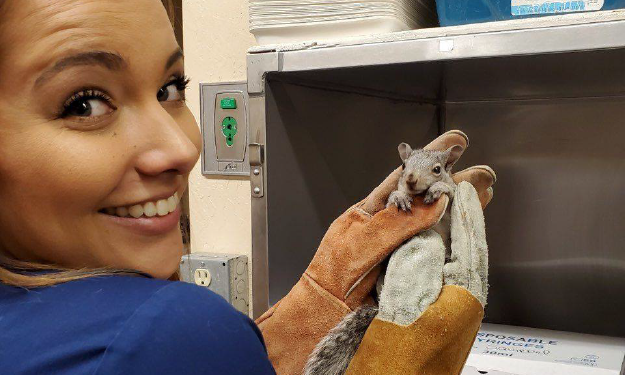Squirrel Appreciation Day

Squirrel Appreciation Day was founded in 2001 by North Carolina wildlife rehabilitator Christy McKeown. Every year it is held on January 21. Squirrels get a lot of attention from humans, but not always much appreciation.
Squirrels are among the most visible wildlife in many large cities and suburbs and are seen more as a nuisance rather than a productive and intelligent wildlife rodent. There are more than 200 squirrel species worldwide, from tree squirrels, and flying squirrels to chipmunks and marmots. They are all in the Sciuridae family, which is native to every continent except Australia and Antarctica.
The Eastern Gray Squirrel in the U.S.
Although there are so many different types of squirrels in the world, here in the United States, the Eastern Gray Squirrel is the most common tree squirrel. Tree squirrels mostly eat nuts, seeds, and fruit, even though they are omnivores. Gray squirrels have been known to eat insects, snails, bird eggs, and animal carcasses when other food sources are scarce.
Hide N Seek Masters
The average adult squirrel needs about a pound of food a week. In order to ensure that they have enough food, squirrels are constantly collecting acorns and other nuts and burying them in safe hiding spots. When they think a predator or another animal is watching where they dig or bury their food, they will dig fake holes and move their food multiple times in order to keep it safe.
Thieves & Spies
They are known as scatter hoarders (squirrels with multiple caches of food) and have a difficult time keeping an eye on all their hidden food. Squirrels may lose 25% of their buried food to thieves, and that’s just from members of their own species! Squirrels have been known to spy on other squirrels and watch where they hide their food so they can steal it for themselves.
Why does this matter to us?
The diligence of squirrels in hiding their nuts is a benefit to us. When they do not dig them back up, we have more trees! Squirrels have accidentally contributed countless trees to our nation’s forests which is a pretty great reason to appreciate these wise little animals.
Watch, But Don’t Feed
We are very lucky to have these intelligent and fascinating creatures living among us. However, the best way to appreciate squirrels is to watch them, not interact with them.
Most people see squirrels and want to try and feed them. Overall, feeding wildlife is a bad idea, since it portrays people as a food source and could discourage natural foraging. Some squirrels can transmit diseases to humans, and even healthy squirrels aren’t opposed to biting fingers or faces. It may be hard to resist when being approached by a squirrel, but our interaction tends to lead to more harm than good.
Next time you take a walk or visit a park, take some time to watch and admire the squirrels. See if you can figure out what they might be up to. Their quick and acrobatic movements are quite entertaining!
Depending on the season, we often receive quite a few baby squirrels that we will send to Wildlife for Rehabilitation to be released when they are able to survive in the wild on their own.
Reference: https://www.mnn.com/earth-matters/animals/blogs/happy-squirrel-appreciation-day
Written by Hannah Alharayeri